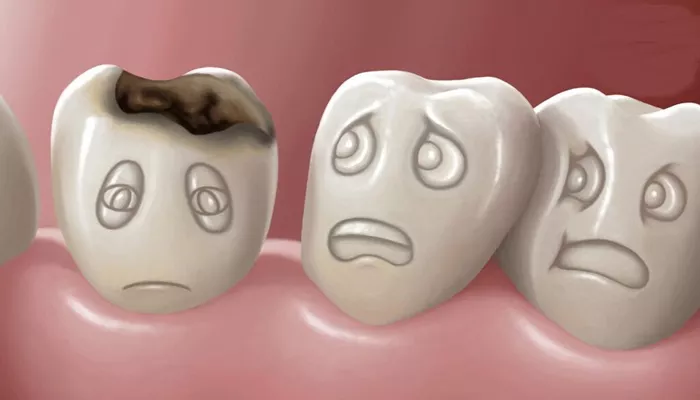Tooth decay is a common dental issue that affects people of all ages. Many people use the terms “tooth decay” and “caries” interchangeably, but it is essential to understand the nuances between them. This article will clarify the differences and similarities between tooth decay and caries, explore their causes, effects, and prevention methods, and provide a comprehensive view of oral health.
Understanding Tooth Decay
Tooth decay refers to the process of demineralization of the tooth structure, which leads to the formation of cavities. It occurs when the enamel, the hard outer layer of the teeth, is damaged by acids produced by bacteria in the mouth. Tooth decay is a progressive condition that can lead to pain, infection, and even tooth loss if left untreated.
The Process of Tooth Decay
Plaque Formation: When you eat, food particles mix with bacteria in your mouth to form a sticky film called plaque.
Plaque adheres to the teeth and can harden into tartar if not removed.
Acid Production: The bacteria in plaque metabolize sugars from food and produce acids as a byproduct. These acids attack the enamel, leading to its erosion.
Enamel Erosion: The acids weaken the enamel, causing it to lose minerals. This process can create small holes in the enamel, which are the first signs of tooth decay.
Progression: If tooth decay is not addressed, it can progress deeper into the tooth, affecting the dentin (the layer beneath the enamel) and eventually reaching the pulp, which contains nerves and blood vessels.
Understanding Caries
Caries is the scientific term used to describe the decay of teeth. It refers to the disease process that leads to the destruction of tooth structure. The term “caries” encompasses both the disease itself and the resulting cavities. Therefore, while tooth decay and caries are related, they are not precisely the same.
Types of Caries
Caries can be classified into several types based on their location and progression:
Smooth Surface Caries: These occur on the flat surfaces of teeth, such as the sides and front.
Pit and Fissure Caries: These develop in the grooves and pits on the chewing surfaces of molars and premolars.
Root Caries: These occur on the roots of teeth, often in older adults whose gums have receded, exposing the root surfaces.
Secondary Caries: These develop around existing dental restorations, such as fillings or crowns.
Similarities Between Tooth Decay and Caries
Despite the differences in terminology, tooth decay and caries share several similarities:
1. Both Involve Bacterial Activity
Both tooth decay and caries are caused by the activity of bacteria in the mouth. The primary culprits are Streptococcus mutans and Lactobacillus species, which thrive on sugars and produce acids that attack tooth enamel.
2. Both Lead to Cavities
Both terms ultimately refer to the same outcome: the formation of cavities. Tooth decay and caries result in the breakdown of tooth structure, leading to the creation of holes in the teeth.
3. Both Are Preventable
Tooth decay and caries are largely preventable through good oral hygiene practices, a balanced diet, and regular dental visits. Education about oral health can significantly reduce the risk of developing either condition.
Differences Between Tooth Decay and Caries
While tooth decay and caries are closely related, it is essential to recognize their differences:
1. Terminology
Tooth Decay: This term is commonly used in everyday language to describe the process of enamel erosion and the resulting cavities.
Caries: This is a more technical term used in dentistry to describe the disease process that leads to tooth decay.
2. Scope
Tooth Decay: Refers specifically to the condition of the tooth and the cavities that form as a result.
Caries: Encompasses the broader disease process, including the bacterial activity, acid production, and subsequent tooth damage.
Prevention of Tooth Decay and Caries
Preventing tooth decay and caries involves adopting good oral hygiene practices and making healthy lifestyle choices. Here are some effective strategies:
1. Maintain Good Oral Hygiene
Brush Twice a Day: Use fluoride toothpaste and brush for at least two minutes, focusing on all surfaces of the teeth.
Floss Daily: Flossing removes plaque and food particles from between the teeth, where a toothbrush cannot reach.
2. Regular Dental Check-Ups
Visit your dentist regularly for check-ups and cleanings. Professional cleanings can remove tartar buildup, and your dentist can identify early signs of decay.
3. Healthy Diet
Limit sugary snacks and beverages. Instead, focus on a balanced diet rich in fruits, vegetables, whole grains, and lean proteins. Foods high in calcium and phosphorus, such as dairy products, can help strengthen teeth.
4. Use Fluoride
Fluoride strengthens enamel and helps prevent cavities. Use fluoride toothpaste and consider fluoride treatments from your dentist.
5. Dental Sealants
Dental sealants are protective coatings applied to the chewing surfaces of back teeth. They can prevent cavities by sealing out food particles and bacteria.
6. Educate Yourself and Others
Understanding the importance of oral health can help you and your family make better choices. Teach children about proper brushing and flossing techniques, and encourage them to develop healthy habits early.
Conclusion
Tooth decay and caries are closely related concepts, but they are not identical. Tooth decay refers to the condition of the teeth as they experience damage due to bacterial activity, while caries describes the disease process that leads to this damage. Both conditions are preventable through good oral hygiene, a healthy diet, and regular dental check-ups.
Related topics:

